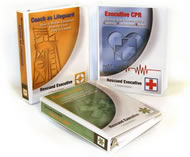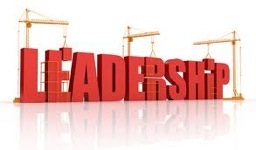Need Assistance? - Click Here To Email or Call 1.800.526.6038
Need Assistance? - Click Here To Email or Call 1.800.526.6038
How much control do you think you have over your life? During any given day, do you have control over much of anything, really? Well, maybe a little. However, the real question is (and be honest with yourself here): Do you feel like you need to be in control of everything around you all the time? The difference between being in control of your own mind and being in control of your environment is night and day. Let’s pinpoint some of the key things involved in healthy control over your mind versus unhealthy control over the environment.
The one extremely obvious point to note is that one version of control turns your focus inward, while the other version of control turns your focus outward. Why does this matter?
Have you ever tried to control the ocean? That would be impossible for one person to do. And you know as well as I do that barking orders or yelling at the ocean wouldn’t change a thing. It would simply continue on its course, ebbing and flowing in its natural rhythm.
However, you can go within and make the decision to go with the flow of the water. This allows for collaboration and harmony rather than control and force.
We could learn a lot from the ocean. Actually, we could learn a lot from water in general.
Becoming Like Water
Water, though flexible, is powerful, steady, and persistent as it carves out its own path. It is confident (have you ever seen water hesitate?), reliable, and typically stays put unless it gets too hot, in which case it evaporates and eventually falls back to the earth. No matter how you look at it, though, water is always present in the now because it has no mind to think thoughts of worry about the future or regret about the past.
1. The present is everything.
When you focus your attention in the present moment, you begin to notice details and spaces that you may not have noticed before. Time may even stretch out for you. This is because you have found a state of being completely focused and present and your thoughts aren’t a part of this focus.
Should you notice your thoughts wandering, just bring your focus back to your breath. The breath is vital to us, not only for staying alive, but also for connecting with our inner selves and balancing us out.
2. Breathing is powerful.
Think about it. With each breath you take, millions of tiny cells carry oxygen to every part of your body to keep it functioning properly. If any part of your body loses oxygen, your body will begin to shut down. If your brain loses oxygen for too long, it dies and can no longer function.
Breathing is life. If you’d like to do some mindfulness breathing, breathe in through your nose, hold for four, then out through your mouth, hold for four. You can count out four seconds, and then as your lungs become stronger and grow in capacity, you may begin to increase your count.
3. Life is liquid.
Just like water is liquid life, life is fluid like water. You may be able to see the big things coming and prepare for them, kind of like large rocks, waterfalls, or a boulder in a river, but you can’t always see all of the little obstacles hidden beneath the surface, nor can you foretell what other unforeseen things may interfere with the flow of the river.
You must remain flexible. If you aren’t able to go with the flow and work with it, your entire life experience will feel like an uphill battle of “making” things happen. If you choose instead to consider multiple options for multiple potential circumstances or outcomes, you will already have a higher chance of success because you’re addressing the problem creatively. Master this and you will be able to handle anything life throws at you!
4. Maybe the world does revolve around you… just a little.
By that, of course, I mean YOUR world. This is true for every person on the planet; think of yourself as a smaller universe within a larger one, within a larger one, within a larger one. Each level is within another level, all the way on up to the entire expanding universe and all the way down to the tiniest atom.
Knowing this, you can approach people you lead in a way that takes their perspective (“the world revolves around me”) into consideration while also helping the whole. Your own perspective will broaden the more you understand this, so try to look at everything from as many angles as possible.
5. Nobody else is really any of your business.
When you spend the majority of your time worrying about what someone else is doing, saying, or thinking, you hand away your power over yourself on a silver platter. If someone else is constantly worried about what you’re doing, saying, or thinking, they have given you power over them and it isn’t always pretty for either person.
Instead, focus on what you’re doing and staying in the moment while you’re doing it so that you can milk it for everything it has to teach you and show you by studying the details. This is how to remain mindful while you’re working on anything, whether you naturally enjoy it or not.
Thanks so much for reading! I certainly hope that this article helps you become a more mindful leader than before.
To learn more about the Mindfulness Movement and the International Mindfulness Federation, please visit:
If you are a mindful leader, that implies you have people to lead, am I right? Well, if there are people, there must be trust, and to build trust, you can work on a few different aspects of your leadership style, habits, and perspective. Read on to learn how you can begin developing trusting relationships with all of your employees… without getting overwhelmed.
What characteristics inspire trust in you and your abilities? If you’re in a leadership position and even just a little mindful, you will likely have at least some of these character traits naturally, especially if you’ve worked with integrity and genuine passion for a while. Whatever traits you have naturally, pay attention and be honest with yourself about recognizing them. From there, you can cultivate the rest of these character traits as you go through mental conditioning, meditation, and continuous mindfulness practice.
The Key Ingredients to Cultivating Trust
· Consistency. If you want to cultivate trust in you and your abilities as a leader, then lead by example. The little things done consistently each day are what will make all the difference in the long run. Once you begin to see results and your momentum builds, the proof is in the pudding and your team will have more trust in you.
· Commitment. Your unwavering commitment to your business, company, project, or vision even during lean or difficult times is what will inspire trust in you for future projects. No matter what the outcome, the fact that your commitment was unwavering speaks volumes. You made a decision and stuck with it even if it seemed impossible or wasn’t popular at one point or another.
· Clarity. Become very clear about your priorities, your purpose, your mission, and your expectations… make it a point not to be vague or ambiguous. Being straight forward is a great way to avoid wasting time beating around a problem as opposed to solving it.
· Competence. You will find that people trust you more if you know what you’re doing, are always learning and staying up to date, and either know the answers or know where to find them. This is where applied knowledge becomes a very powerful tool.
· Character. Are you the type of leader who does what is right over what is easy? If so, this is a characteristic that will help to inspire trust in your leadership. Life and business very often require doing what needs to be done whether we like it or not, so it’s no wonder that this trait inspires trust.
· Gratitude. A leader who practices gratitude will have an amazing set of personality traits that everyone can appreciate. That’s what makes a mindful leader such a great connector. Grateful leaders don’t gossip, complain, or feel entitled. This mindset can always be achieved through practice.
· Results. Nothing screams, “Follow me!” like achieving the results you set out to, or better. When you are able to produce positive and successful results on a consistent basis, your expertise expands, your team trusts you more and more, and you are able to be more confident and build upon your success no matter where you are on the overall ladder.
· Empathy. Being compassionate toward others is essentially caring about things bigger than yourself or outside of yourself, and taking those things into consideration. This will ensure that you are working toward the best interests of the majority and the business as a whole, applying the golden rule as your default setting.
Now that you’ve read about some of the most important traits of a great leader, it’s time to put these habits into practice. The only thing you have to do to begin changing your life and leadership style for the absolute best it can be is to implement one of these small habits at a time until you practice all of them daily. Think incremental improvement at a relaxed pace so it sticks effortlessly and feels wonderful.
For more information on the Mindfulness Movement and the International Mindfulness Federation, please visit:
http://executivecoachinguniversity.com/mindfulness-movement
So, is honesty the best policy? In short, the answer to that question is yes. Of course, there will always be circumstantial nuances surrounding your decision about how and when to be honest, as well as how much of your truth to share. However, as a general guideline, honesty is absolutely the best policy… especially when it comes to being honest with yourself… and your team. Let’s explore that thought a little more deeply, shall we?
Honesty is not only a virtue, but it’s a habit. A lifestyle, just like any other habit or recurring action is. Also just like any other habit, it has an opposite or reverse side of itself – the “negative” opposing habit you may fall into. Now, I don’t know what the opposite of being a liar is (is being a “truther” a thing?), but maybe we can just make it a point to do our best to be honest ;).
Now, are there ever times when honesty may not be your best bet? Typically speaking, being honest about what’s happening is more beneficial in the long run than not being honest. However, there are a few ways in which you can make sure you’re maintaining your integrity while also not shying away from tough leadership decisions, messages, and so on.
3 Ways to Be Honest and Tactful
Honesty is important because it builds trust between you and your team. However, just spewing out whatever pops into your head is not what we mean by being honest. Rather, to build and maintain trust and rapport with your team while being honest, some of the following ideas might help.
1. Take Time to Step Back and Think.
This is especially helpful if you have something challenging to talk about and/or solve. The challenging times are when you, as a mindful leader, need to take additional care to be at your absolute best so that you can help your team through the aspects of these challenges they may not know how to deal with. Taking a day or three to figure out your wording in order to maintain the best possible relationship with your team is a small price to pay for doing it right the first time.
2. Meditate.
When you meditate regularly, it is much easier to widen the gap between data coming in and reactions going out. That space is meant to give you the time and reflection necessary to go from reacting to responding on purpose. Remember… you don’t always have to respond right away. You can also take some time to think.
3. Don’t Tiptoe Around the Issue.
If you’ve thought about things all you can and planned your wording all you can, then don’t procrastinate. You should go ahead and address the issue at hand as soon as you’re ready but before you have a chance to talk yourself into waiting longer ;). Analysis paralysis is avoidable if you know what you’re dealing with, so keep that in mind moving forward.
The Benefits of Honest Leadership
· Mutual Respect – leadership and employees respect each other and therefore take each other’s ideas more seriously.
· Crisis Prevention – if everyone is on the same page to begin with, challenging times are much easier to handle.
· Employee Encouragement – if you are honest about any challenges that come up and have enough confidence in your team to allow them to solve their own problems, not only will your team be more up to the task, but they will find ways to solve problems without having to ask for help if you allow them to.
As you can probably tell, honesty, more often than not, is definitely the best policy. Even though it may not always be the easiest way to handle things, it’s much easier than trying to keep track of lies or omissions of truth and which version of your story you told to which person. To keep things simple, maintain your integrity, and prevent the messes lies can create, it’s much easier to be honest to begin with.
As always, thanks for joining us here on the Mindful Leader Blog! Continue leading mindfully, and if you’d like to learn more about the International Mindfulness Federation and the Mindfulness Movement, please visit:
http://www.mindfulnessfederation.org/
No matter what your business or company specializes in, your customers are extremely important, and much of their experience depends on the individuals they work with: your employees. As a consumer yourself, I’m sure you’ve noticed when companies, businesses, or even government agencies have “dropped the ball” and are essentially just doing the bare minimum to punch the clock and get paid. Talk about a sad state of being, especially at work where you spend the majority of your waking hours! So how do you go about making sure your employees are happy, passionate, and fully contributing their unique value? Read on to learn more.
There are typically five key areas that should be examined to determine whether your work environment is healthy or not. If it isn’t, you may have some work ahead of you, but getting and keeping everyone on track will be well worth it in the long run. If you discover problems in one of these areas, you may need to overhaul everyone’s attitudes and habits, so brace yourself – if you’re a mindful leader getting ready to take on a company or department revision of any kind, be ready for challenges, resistance, and maybe even having to let a few people go (depending on how things play out).
Alright, now that we’ve covered the doom-and-gloom part, let’s get back to our usual business of sharing solutions.
Five Areas of Interest for a Healthy Work Environment
1. The Leadership.
Oh, no! No leader wants to hear this, right? However, one of the first places to look for issues concerning the work environment as a whole is whether leaders in this department or organization are narcissistic, sociopathic, manipulative, or otherwise toxic. If you’re the leader and this doesn’t seem like you, then you might be okay (although you may consider asking for feedback from your employees to be sure). If you’re evaluating another leader’s performance and see any kind of toxic behavior, do what is necessary to keep this person from destroying the health of the organization from within.
2. The Communication.
Communication is important anytime there are people involved, so unless you’re living as a hermit, off-grid in a cave somewhere in the mountains, it may benefit you to hone your communication skills… and everyone else, for that matter. Communicative dysfunctions can come in the form of misleading information, indirect communication (sending messages through other people), and withholding information. Pay attention to learn whether this is an area of concern or not.
3. The Side-Effects.
Are your employees depressed, gaining weight, suffering from addiction or alcoholism, or not sleeping well? These could all be the result of a toxic work environment, so if one department in particular seems like its employees are unhealthy, sluggish, or just plain miserable, you may need to take a look at that department to determine what’s going on. This type of development over time is not good, and it may eventually even be the downfall of the entire company. It’s better to acknowledge and solve a problem when you discover it rather than letting it fester and get worse.
4. The Rules.
If policies and rules are followed sometimes and ignored other times, the entire work environment begins to break down into chaos. One hand doesn’t know what the other is doing, and this makes dealing with the company an extremely frustrating experience for its vendors, customers, and even employees. Is everyone up to date on policies and procedures in your department? What about your company as a whole?
5. The Culture.
Attitudes can be contagious, whether they’re positive or negative. Just as misery loves company, so, too, does a happy soul love another happy soul to interact with. If your employees complain, feel miserable, and focus on all of the negative aspects of their job, then everyone will be miserable soon enough. However, if there are a few daily habits in place to put everyone in a more positive mood, you can keep the good vibes strong while disempowering chronic complainers.
Now that you know where to look for problems, how do you think your company, organization, or department is doing? Is your work environment somewhat healthy, or do you have your work cut out for you? Tell us your story by leaving a comment or reaching out to us via email. We love hearing from you!
As always, continue leading mindfully and have a wonderful week.
For more information on the Mindfulness Movement and mindful leadership, please visit:
http://executivecoachinguniversity.com/mindfulness-movement
Need some help with your mindfulness practice? The Mindful Moments can certainly help!
As the New Year hits, most of us turn to recapping the year behind us, then setting goals for the year to come. Goals are fantastic as they help us set a direction. If you don't know where you are trying to go, how do you ever know if you get there?
When I think about resiliency as a goal, I think of being resilient as building a better foundation, so that we are more able to adapt, flex, and grow through the things life brings our way. Being resilient means demonstrating our ability to effectively and easily navigate our lives.
We have all heard the motto; "It is not what happens to us, but how we respond that matters." I am forever working to increase both my own and my children's level of resiliency. I want us to be prepared for those times when we may be knocked around, or even down. I want us to get back up, dust ourselves off, and have a reserve of energy to make what we want happen.
If you wish to take a look at your level of resiliency (or how well you bounce back), try taking a look at some of these aspects of your life.
Try to slow your pace a little. Stop, look, and listen, so that you understand what is really happening vs. what story you have built around the situation. The story is not tangible but will drive our emotions and therefore our actions. Be deliberate in the things you focus on.
Resiliency is a great goal. With a little focus, you can build it and be a better person for having it.
All the best!
Find out more about Jenna here.
Are you ready to boost your career...and earnings?
Learn how the Power of Neuroscience can help.

© 2015 and beyond Executive Coaching University. All rights reserved.
Which one of these fits your need? Something else?
We admire your courage to start investigating whether coaching will help you. We know it can help most folks…not all, but most. You see, the key is whether you are ready to change. If you’re not, please don’t waste time going down the coaching path. It won’t work. If you are ready, then let’s talk and see if we are a good fit.




We just received word that our flagship Executive Coaching Training Program (CMEC) was approved by the International Coach Federation! We can now award 15 CCEUs (credit hours) toward coaching certifications with the ICF. This is a wonderful compliment to our SHRM certifications.
This is such a beautiful reflection on our entire team. Congratulations to all of you!
Many thanks to all of you for your support over the years. We are so blessed…
You can find details here:
http://www.executivecoachinguniversity.com/
Warmly,
Drayton
Founder and CEO
According to Gallop (and other leading survey firms) here is the reality:
What do you think of these smelling salts?!
Coaching can address all of these issues…in fact; it may well be the ONLY thing that can cure these workplace “ills.”
If you don’t have a coaching strategy in your organization, I can guarantee you one thing—these statistics will not go down…
Coaching is the “cure.” Isn’t it time you used coaching to focus on your most important asset…your people?
A. Drayton Boylston
Founder and CEO
Executive Coaching University
© 2013 and beyond Executive Coaching University. All rights reserved.

Are Leading or just Managing?
Pretty sad facts.
Guess what? They more than likely apply to your organization too.
And...
If you manage people, you own this!
What’s happening within our workforce to make these statistics a reality?
In the United States employee engagement only averages 30%. That's it.
Why?
It comes down to poor leadership.
We have spent so much energy creating “good managers” that we have become disengaged with what it means to be a good leader.
Managing comes from a need to produce an outcome, which of course, is important. However, when we can move to a place of leading those around us the organizational momentum transforms. More than anything employees want to make a contribution. Once they feel that they are, they stay...and they stay engaged. Which boosts your bottom line.
If you have the management skills without the leadership skills your career will plateau at some point. That is a fact.
The soft skills that good leaders possess are going to be in high demand as the battle for top talent continues to increase. Are you ready?
Click here to find out more about Jenna.

Want to learn how to become a better leader? Click here for details.
Coaching In The Workplace - Training for Executives, Managers, and HR Professionals
© 2014 and beyond Executive Coaching University. All rights reserved.
While our time together progressed, my client must have glanced towards, or checked in some way, her “smart phone” three or four times over the course of our first fifteen minutes.
I commented on her split attention and asked her to turn off the phone and just be focused on our time together for the next forty five minutes – fully focused upon our work. The look on her face would have lead someone not knowing my request, to think I had asked her to do something exceptionally distasteful…maybe even illegal!
Through our discussion around my request it became quite clear that she had NEVER turned off her phone – it was always on. This meant she was always connected, always available, always “on.”
She explained that this level of being available and connected was the status quo at her corporation and essentially had been the status quo since she was at University. “What if I miss something really important?” she asked. “I’m not productive if I’m not juggling a number of issues, projects, or conversations at once!” she stated.
This multitasking misconception arises quite often, especially with high performers who see their success as driven by the ability to do many tasks at the same time.
Yet, there is a downside to always being “on.” Consider:
Is it possible that any of the above might contribute to the 33% worker productivity rate in the U.S? 33%!!!
There are also other, more personal costs. This particular client was referred to me due to increasing conflicts between her staff and those in her chain of command – she had become “hard to work with” and was close to losing the job she so valued.
Additionally, her marriage was on the verge of divorce and she had been diagnosed with digestive/intestinal issues primarily caused by stress.
Coincidence? Not likely!
Sound familiar? Chances are if you are reading this then you have experienced, or know someone close to you who has experienced, a very similar chain of events.
Take time to focus within the moment, express gratitude, and disconnect at least once daily. You will find you are actually more productive, healthier, and happier. Then lead all those around you to do the same!
Greg Styles
Director of Special Projects

© 2013 and beyond Executive Coaching University. All rights reserved.